ABSTRACT
This translation of the Finnish version of the fourth chapter of the 1916 Barnlek represents one of the earliest occasions of the study of play and games to appear in the Finnish language. The Finnish version which this translation is based on appeared in 1918 under the title “Lasten Leikeistä”.
KEYWORDS:
Translator’s note:
I have attempted here to create a concise translation that is easy for the modern reader to access. In doing so some of the colourful language utilized in the original work has been lost. Original work contained no footnotes, and so all the footnotes in this translation have been added by the translator. Keeping in mind that the original text was published in 1916 and the Finnish version on which this translation is largely based in 1918, I have chosen not to modify or tone down expressions such as ‘savages’ or ‘barbarian nations,’ with respect to anachronism.
At least from time to time, everyone who has spent longer periods of time in foreign countries experiences those sentiments that comprise the feeling of homesickness — moments in which it is no longer enjoyable to disappear into the midst of strangers, and when the joys and exhilarations of such a setting that is completely foreign have been thoroughly exhausted. In these moments the foreignness in customs and dress feels hard and repulsive, and the mind strives to find things that resemble the known and familiar.
Such feelings of uncertainty and isolation can fill the lone travellers mind even when they are at once immersed in the stream of strange and exciting sensations of the foreign. There is then nothing more depressing than strolling the streets of a city such as Madrid on a sunny Sunday morning, where almost everything seems foreign to the eye. Should the traveller have missed invitations to acquitances’ homes and encountered distrust and suspicion from the locals – as can often be the case when travelling – one might easily be overwhelmed by lonely isolation. We are then troubled with the absurd idea that we share none of our memories, hopes or dreams with these strange masses that meet us on the sidewalks. With thoughts such as this, we might then think that it would have been better to never have left the places in which people’s thoughts are formed with the same language, and stride along the same tracks, as ours.
While there hardly exists a traveller, who has not once felt these feelings, most also know how simple it is to free themselves from them. Certainly, regardless of social class and level of education, there is an abundance of such realms of life, within which the features and expressions of living are same in the foreign, as they are in one’s own. This is most noticeable when large masses are stirred with joy and sadness, but one can also feel it in the most miniscule expressions of life, even while there exists a great amount of artificial proclaiming of national uniqueness. Returning to our example from the streets of Madrid, should we and take a turn from the main boulevard to one of the smaller alleyways, we are met with children engrossed in their games, a sight which most easily transforms the feelings of strangeness into those of belonging. Even if the yells and discussions contain a great deal of that which is not immediately understandable, it is easy to recognize their functions, and see the familiar forms of ring-, blindfold- or battle games, that any Nordic has also played in their childhood. It is at times such as this that it feels for a blink of an eye that one had touched again the soil of the homeland, and from this sensation gathers new courage to meet all the strangeness of the foreign environment.
In the end this feeling of safety emerging from something so small is much more than mere illusion. Having met it, we move with newfound decisiveness in alien places no matter how strange or foreign they may seem. It is as if we had found the most important link bridging these different realities, when we notice that the small pastimes of children and the lives these reflect are the same whether they are played on the banks of Manzanares or the waterfront of Porvoo River.
It is naturally among the civilized nations, that one has the greatest chances of meeting such similarities of play and games when comparing them to one’s own. However, one would be at fault to assume that these similarities only exist between the developed nations. Many explorers have on the contrary noted the strange fact that the games of the children of savage and barbarian peoples so closely resemble those of our own. One explorer knowledgeable on the lives of the Kafir people mused similarly in his book: ‘Nothing makes a European feel their kinship with the Kafirs more clearly, than watching the games of the children. Nearly every game that we play in Europe that does not require much apparatus is also known by the Kafirs’Footnote1 So thought Dudley Kidd in his volume.
In this fact that some of the most universal games find their pronunciations with peoples of widely disparate stages of civilization and who live leagues apart, we can see one of the strangest findings of ethnology. There have been many attempts to explain this phenomenon, and to begin with a view that is closest to the common sense, we can say that as the human nature everywhere is relatively similar, the simplest of games thus must occur by themselves in all cultures. An explanation such as this no doubt fits the most primitive forms of play, such as the mimicking of the behaviour of adults or throwing of balls or stones, et cetera. But without a doubt it should be certain that this explanation does not work for games that require more complex apparati, or are played using certain sets of rules, as these rules are often too in depth to have formed naturally in separate places and yet in the similar manner. In these cases, we have to assume that the apparati or rules of the game have developed in one place and been then spread from there to a variety of locations, later to be discovered by explorers.
Many examples show the savages assuming games of the civilized peoples when coming in contact with them, or that these games have been handed down by some third barbarian tribe, but still originated with the civilized people. In other cases where such contact has been impossible to show true, it has been necessary to assume that these games have spread during some ancient migration of peoples that has been lost to history, or that they show remnants of a time when these now far apart nations lived in close contact. We can then in the children’s games of today see memories of the developments that occurred in unknown and ancient times.
So that this way of understanding would not feel ill argued, it is necessary to bring attention to a specific quality present in the games children play which gives these transient and dismissed phenomena credibility as historical evidence. Everyone who has got to be acquainted with these little people’s expressions of life has noted that their played-out societies function with much stricter conservativeness than is true of the adult societies. Children arrange their societies around rules and functions that, once enshrined as tradition, are never given up or deviated from. From generation to generation the mantras of their games remain the same, even though no-one might no longer understand the meanings of the words. Same is true of the forms and shapes of their games that might have lost their original meanings aeons ago. There is a religious quality to the way they uphold these traditions that their forefathers already played out in their childhoods, and Dr. HaddonFootnote2 is probably not exaggerating in their claim that children consider voluntary deviation from the correct form of these games to be a moral offence or even a sacrilege of sorts.
This stern, indeed almost ritualistic appreciation for tradition can explain how games that were played out in antiquity or the middle ages appear as same as those that one can observe on any close by street or alleyway. The fondness for tradition in the minds of children has preserved these pastimes and amusements as almost unchanged through time, all the while societal and national structures have undergone most profound changes. In their apparent dispensable smallness these games have managed to weather storms that have toppled institutions of great significance. It has been said that these forms have lasted longer than many democracies or empires, and that they will probably come to mirthfully survive many future upheavals. This is of course only if they can survive the enthusiasm of contemporary educationalists, who have taken it upon themselves to transform these games into up-to-date tools of modern education. That is to say, there is a certain mysterious, timid quality about the games children play, that cannot easily be touched by adults without risking the destruction of their ancient core elements. However, we can take solace in the possibility that these elements might already have had enough time to hide themselves into the notes of the folk poetry collecting ethnologists, before the well-meaning educationalists scare them to death.
However, one can reasonably ask, what is the intrinsic quality of these games that enables researchers to consider them as historical sources? A discerning reader might say that even if children spend their time running or jumping in a certain pre-defined manner that should not alone offer us any insight into the development of the human condition. And should we consider some of the most ancient of games, this argument most certainly holds true. Should we read from Becq de Fouquières’ volume on ancient gamesFootnote3 and learn that boys of antiquity used to skip stones across water’s surface, and that in ancient Greece this game was known as epostrakisnos, and even that it is mentioned in Minucius Felix's dialogue Octavius and so forth, we have perhaps learned a few new words or pieces of trivia, but as far as proper knowledge is considered have made only meagre strides. Similarly, to use another example, If we consider a popular children’s game from England and Scotland in which one child sits on the back of another, holds up a number of fingers and asks: ‘Buck, buck, tell me how many fingers am I holding up?’ And note that this particular game has its variants in many North- and South-European folk games as well as in Petronius’ Banquet of Trimalchio, we again see that little has changed in these games, but have learned only little from either British or Roman conditions. If this was all games could tell us, they would not be of interest to historians, but rather only to collectors of trivia.
The real state of the matter is, however, that there is only a handful of games that we can't prove to have their origins in something more than children’s games. As soon as we understand this, our interest in these phenomena should rise as well.
To properly orient ourselves, we should only note that the games children play today have once been amusements of grown-ups, and we need not go far back in time to see these games appearing as similar salon pastimes as card games and dances do today. To see proof for this claim one only needs to look at the early nineteenth century French parlour game guidebooks aimed at the aristocracy translated to several other languages. Engravings and carricatures from the same period show comical depictions of high-collared men in their frock coats with puffy-sleeved women partaking in a game of forfeits.Footnote4 In these depictions the forfeits include mostly kissing or bending over in the most difficult looking of shapes. American scholar W. W. NewellFootnote5 has noted that games of wit or forfeits, that have their main objective in kissing or other intimacies were very popular in North America just a few decades ago, when dancing was forbidden by puritanic customs. And when we think that only a moment ago such games were popular also with the Nordic adult, we can only approve of his notion that the world has indeed been a bit childish in its amusements.
We can see this also if we think about the innocent tag gamesFootnote6 that people used to have fun with until recently. Games such as Cops and robbers, which now live on only as the pastime of young boys could still, in the latter half of eighteenth century attract the highest nobility of Italy into the meadows outside city gates. Jeu des barres, which is a variation of Cops and robbers, was notably played on a few summer evenings in St. Cloud between Joséphine and Napoleon, before the rank of the emperor forbade him such amusements. If we consider these relatively recent examples, it is no wonder that similar games were in fashion also in the court of Elisabeth, or that there are depictions of Barley break, a fashionable tag game of the period, in a novel with such air of refinement as Sir Philip Sidney's Arcadia.
That the games of children have preserved within them remnants of adult pastimes, is at its core no different than the passing on of fashions from the higher strata of society to the common people. The habits of commoners and the games of children thus offer a wealth of interesting material for historical study especially for this reason, that both of them so diligently pick up the manners that are discarded by those higher up. From a general social science perspective, it is then no doubt interesting to examine the movement of these games through social strata or age groups, for there are also examples of folk dances or children’s games being elevated into the amusements of nobility. However, there are very few studies about the core nature of play phenomenon. Regardless of whether the game originates with the nobility or in the child’s playroom, it is most important to know how it has originated and what kind of things were associated with it. These are the questions that we can't answer by merely observing the possible social ascent or descent of the game.
At this point again, a sceptical reader can make some remarks.. Even though we might be able to say that the study of children’s games allows us to access the preferred amusements of the old, what are the grounds to justify the study of their origin? Surely these games contain their own explanations, such as passing the time while offering some physical or mental exercise. It must, after all require no specific thought or concentration to come up with a children’s game, and thus they must not contain any specific meanings either. This is what a common sensed critic might say, and they might not be wrong initially. However, when we regard the matter with better focus, we can see the superficial quality of this line of thought. Even if we did believe that some of the lower evolutionary stages of games had originated merely to provide amusement and exercise for the participants, or even if these benefits came to be as a side product of some religious superstitious reason, it's still clear that the form and rules of these games did not originate from nothing. These elements always have their counterparts in the reality that these games mimic, regardless whether this mimicking happens just for the fun of it, due to some mimicking instinct or for some practical ritual reason. By focusing on these elements, we might be able to find more about the circumstances in which these games have originated, and maybe even make guesses about their age, even if scholars that have previously made such presumptions have often been somewhat overzealous in their guesses. Here as in most fields we should avoid the habit of certain scholars of tying these matters with the influence of the Proto-Germanic race in an attempt to highlight the feats of one’s own people. Avoiding this, we might be able to use the above method to attain results, that no-one should have any qualms about.
Therefore, it's difficult to find any issues about the way Lady GommeFootnote7 associates games such as Cops and robbers with rudimentary warfare. It's hard to know whether running exercises such as this game have developed from the training exercises of grown warriors, or if children have taken them up in mimicry of the course of battles. In either case it's undeniable that these games resemble actual practices of warfare from their time of origination. The eagerness with which young boys capture their adversaries or their territories in these games is reminiscent of times when such border disputes or skirmishes were everyday occurrences. It is noteworthy that these games have been preserved especially well there, where such disputes were commonplace, and that they are often accompanied by yells or songs placing these games into contexts of real conflicts, such as British versus the Scots or Wales, or possibly ‘King William’s sons’ against the ‘Proud men of Prince Charles’.
These are however rare cases, and it would be careless to associate all games that children play with actual historic conflicts. The associated songs might be later additions to games that already existed, such as is the case with the game We are the rovers as it's played in Sussex, Kent and Hampshire. Here the claim is that the verse would have passed on from the time that Napoleon was preparing his landfall to the coast of England. However, it's only natural that events that excited minds in the course of history would have been passed on in songs and stories, which only later became associated with these games. Folklorists have often collected such stories and songs and associated them with certain historical events, but when we look at all the factors involved with impartiality, one can't help but notice how meaningless properties, which should be understood as secondary elements, have been stressed in order to determine the time of their origination. Although both ethnology and the study of cultural history offer us examples of folk dances or plays that appear to have been created in order to preserve and enliven the memories of certain battles, voyages or campaigns, there appears to be hardly any children’s games that are directly involved with matters of state. It is as if the origin of these games is hidden beyond a time with names or dates, or as if rather than depicting the turning points of culture, they instead depict the continuity of it. Changing of seasons, the labours of men and women, joys and sorrows of private life, communal rituals of old religions, fables or myths from the collective folk memory – Such are the topics that we can with ease find in the games of children. These are indeed things that the grown-ups have often discarded in favour of grander topics for their own plays and dances.
Many of these games are rather obvious in their inspirations, and thus it is not important to dwell on them for much longer. Games where a wolf attacks berry pickers or a witch attempts to steal the children while the mother is absent, have obvious points of reference in fables or everyday events. However, the games that seem to take their contents from myths or rituals of old religions warrant closer inspection, even if today the actions in these games have already been emptied of their original meanings.
Blind man’s buffFootnote8 has in this context been through a very descriptive evolution. Children playing this game today probably don't think the blindfolded boy or girl to be representative of anything more than just that. As far as the attendees are concerned the game could have originated from the Kantian will to know how much of the outside world one can perceive without their eyesight. Or perhaps if this seems too philosophical, then just to create an excuse to draw exhilaration from running around and attempting to feel one’s adversaries with just their hands. These factors alone are enough to explain the popularity of this game in various parlour settings and so it's no wonder that Le colin maillardFootnote9 often features in rococo paintings of Pater or Lancret. Various memoirs tell us that it was also played in Madame du Barrys salon, as well as in various court settings from the Paris Hòtel de Rambouillet to the royal tents of King Gustaf Adolf’s multiple war efforts.
However, if we go further back in time, it is also possible to see the game having functions beside running and catching. If we look at an illustration from a certain medieval manuscriptFootnote10 we can see one key difference to the way this game is being played today, namely that the blindfolded player has veiled their whole head instead of just covering their eyes. Alone this observation would not amount to much, but once we consider the names of this game in various cultures; Blind Bock in the Nordic countries and some parts of Germany, Blind Buk in old Scotland, Blinde Kuh in Germany and Blind Harie in Scotland et cetera – We are persuaded to believe that the veil had dual functions of not only obstructing sight, but also masking the player as some other creature.
If we take the English name Blind Harie as our starting point – a name which apparently should be interpreted to mean a blind hairy thing rather than blind Harry – we can easily imagine the blindfolded player wearing a piece of animal fur or of otherwise coarse cloth over their head. Looking like this the player could be associated with the Devil, who among other things is in English called the Old Harry.Footnote11 Even if the player was not meant to represent the Devil himself, they could be associated with the smaller demon Brownie,Footnote12 who is also known for their hairy appearance. A children’s game in which a demon attempts to catch the other children indeed fits well the conceptions of how such beings are aligned towards the human realm. This would seem plausible also because similar themes can be found in other tag games.
In the Scottish game Hornie one of the players chases the others while trying to catch them with his or her hands, which are tied together so that the two thumbs are outstretched in front. Due to the fingers resembling horns is the player called the Hornie, which is also one of the Devils names, although one could also interpret it to mean a horned animal. Following the former line of thought we can compare Hornie to another tag game of antiquity in which one of the players jumps around on one leg and attempts to touch the others with a stick. This is in mimicry of a one-legged spirit called Empusa, who other linguists have taken to be a Fury, but some scholars see as Hekate herself. If we take the word Hornie to mean the horns of a goat, then there can be no comparison to Empusa or its modern equivalents such as the French Jeu du diable boiteux, nor to Blind Haire. But we can on the other hand see it as a close relative to the Blind Bock and Blinde Kuh. In this case these games would be about teasing the animal, who in turn attempts to ram and gore those doing so. Here then the cloth worn overhead would be in attempt to make the player resemble the animal. In this case the cloth would also suggest the furs and heads of actual animals that were worn in pagan masquerades of antiquity. However, it should be noted that in the medieval mind the notion of the buck was not distant at all from the concept of the Devil, and thus it might not matter at all which of these the scribe ended up painting in their manuscript. It is a question for other scholars whether these bucks had anything to do with the cult of Thor or his old sacrificial practices, but for now we will content ourselves with knowing that these games have their origins in pagan ideas and have probably been played in pagan feasts. Knowing this, we can probably never again look at a child fleeing the blindfolded without feeling a semblance of respect for the ancient landmark that the game itself is.
There is a wealth of other children’s pursuits that have an even more obvious relation to ancient and forgotten practices, but it's often difficult to determine exactly from which prototypes the more recent forms have developed from. For example there have been many theories concerning the origination and development of the game which in Swedish is known by the name Liten lefver än.Footnote13
In addition to Nordic countries and Central Europe, this game can according to PitrèFootnote14 also be found in Siberia, Italy, Spain and Portugal. In the game the players sit in either a ring or a row and pass around a burning stick trying to keep the flame alive for as long as possible. It is generally played in this way everywhere, however, the words that are chanted or in which the torch is called differ from place to place. In Germany, where the game is called Fuchsbalg (Fox skin) the poem that is recited goes Stribt der Fuchs so gilt der Balg (Even if the fox dies, the skin is left). Goethe borrowed this line for one of his most famous love songs. Here the flame seems to be considered an animal, which should it die will result in the player receiving a forfeit. There is a similar perspective in a certain Danish Christmas game, in which a burning stick is passed around while the players recite the words ‘Don't let my lords bird perish’. In this case there have been attempts to derive the games original meaning from the text that accompanies it. The little flame here is said remind of the story in which a certain nobleman had given his underlings turns to care for an expensive bird, and the peasant on whose turn the bird perished would be met with a large fine. Such explanations sound a bit too much alike certain etiological myths or explanatory stories that have been invented in order to make some of the more obscure parts of the church service appear less nonsensical or artificial after these practices already exist. Even if the aforementioned contract between the nobleman and his serfs had no bearing on the contents of the game itself, has it at least shaped the words that accompany the game in certain regions. However, it is unthinkable that a small, fleeting folk anecdote such as this would have been the basis of a game that has spread all around Europe and beyond.
Other interpretation is offered by E. B Tylor in his volume Primitive Culture.Footnote15 The great British anthropologist takes as his starting point the French and British children’s games where the flame represents a human life such as Petit bonhomme and Jack's alive, and proceeds to make a connection between the game Liten lefver än and a certain story about secret Manichean cult services. It was thought that in accordance with some old blood magic superstitions, these Manicheans used to pass around a human child and take turns stabbing them until he or she bled dry on the lap of this cruel heretic. As with the aforementioned Danish tale, this case can also be interpreted as memories of past horrors melding with an existing game, possibly influencing its name and text. However, it's hard to see why we should limit ourselves into considering the flame to represent a life, when there exists a number of old cultural practices that involve the extinguishing of an actual flame. Pitrè has noted that it would be only natural to associate the flame in these games with the torches, that were lit on the altar of Prometheus, and then passed around by Athenian youths in a lampadedrom, or a torch run. We can find an even closer resemblance from ancient Rome, where young girls would gather to pass around a torch attempting to keep the flame alive. Here the belief was that the girl on whose turn the flame went out would be met with great misfortune. If we consider examples from antiquity to be too far-fetched, we might look to a game from Bretagne, in which young girls pretended to be the keepers of a holy flame, and the one who let the flame go out would be taken to prison as a punishment. Or we might follow the same line of thought as Lady Gomme in her monumental work on British children’s games,Footnote16 in which she associates these games with the old practice of sending a burning cross as a sign of war, a flame which would be kept alive with great care by those who passed it on.
In all of these practices we can see similarities to the idea that is also central in the game Liten lefver än, namely that there is a danger involved in letting the flame go out. Similarly, as the Athenian would have lost the torch run, the Roman girl been singled for misfortune or the Breton set for punishment, the player of today will receive a forfeit should the flame go out on their turn.
Whenever these games end with performing a forfeit, there is certain serious quality present that leads us to think that the practice has its root in something more than child’s play. German scholars have noted that naming a forfeit resembles ancient Germanic court proceedings. Here the leader of the game asks the other players what the recipient of the forfeit should do as a punishment, in a manner that a judge might arbitrate court business. When one of the other players names the punishment that the defendant must perform, it is as if the jury had been heard and the verdict passed. On the other hand, the fact that mistakes during the game always lead to the receiving of a forfeit, leads us to think about ancient church services, in which deviations from the proper tradition always led to strict punishment. Among Christmas games there are several in which the main point is to follow certain prior given tradition without fault. This can be for example first memorizing and then reciting complex rhymes. On the other hand, many folklorists and scholars are familiar with the exact care, that some primitive religions take in following their sacred texts during cult services. Therefore, it seems plausible to believe Lady Gomme’s assumption that these games of memorization that involve the punishment of receiving a forfeit, have their roots in ancient religious practices. Even then we should take great care passing such judgement before we know the exact contents of these proceedings.
If the conclusions of these games then bear the resemblance of certain forgotten, ancient and serious functions, it must be noted that there is an even stronger, almost mystical quality their outsets as well. When determining which one of the players has to act from the unfavourable position of catching the other players during a game of tag or finding them during hide-and-seek, there is usually a recital of a specific counting out rhyme. In these rhymes there is usually a correspondence between the two final sounds of the lines for example so: Rich Man, Poor Man, Beggar Man, ThiefFootnote17 Here the message is rather understandable as far as elimination is considered, whereas a great part of the lines of these poems can also be an incomprehensible mess. Sometimes they start off with a story, or in yet other cases are they formed from incomprehensible words that have no connection with each other whatsoever or are accompanied perhaps by foreign or archaic counting words.
It might seem that there is not much science can learn from such poetry. Despite that, these extremely corrupted texts have given material for the widescale scholarly efforts of the American doctor H. Carrington Bolton, who collected these counting out rhymes from various languages and created his own theory to interpret their original meanings.Footnote18 These rhymes that children recite without any deeper thought are, according to Bolton remnants of old prayers and incantations, which have due to various superstitions been transferred to the realm of games and continued their life there. Even if there are some merits to it, the scale in which Bolton has applied his theory is – as W.W. Newell has also noted – too one-sided and narrow. As Lady Gomme has noted there is probably a link to some ancient ideas for example in a game of tag, when it is played by its proper rules. These being determining the ‘it’ with a counting-out rhyme and then fleeing the tabooed or tainted person until one of the other players is caught and the and the original personality retrieved. Gomme notes that using a counting out rhyme would be thoroughly unnecessary if there were not something negative in the condition of the person that is singled out. Game of tag consists then of tabooing of a person, forbidding them from touching or being touched. This calls to mind two separate practices, first the separation of the sick or criminal elements from the rest of the society, or secondly the determining of victims for religious sacrifice by means of lottery.
If these counting out rhymes lead us to think about the religious services of pagan temples, it is also possible to see remnants of the right of sanctuary in the ‘safe-zone’ or ‘goal’ in these games, a place where other players are safe from the attacks of the ‘it’. We can find similar memories of religious practices or witchcraft in many of the most common of games. Thus, the study of these games often starts out with the most innocent of amusements and ends up in the strict and serious world of religious worship. There are some discoveries to be made from these sacred things that have sunken into the profane world of children’s pastimes, but as far as solid results go, there is only little room for research beyond what has been noted in the length of this text. The study of old myths and religious worship is filled with many uncertainties and problems, that can easily make a scholar lose their way without any hope of return. Therefore, it is advisable to retreat from this treacherous field of study, and instead focus on those amusements and pastimes that have their sources of inspiration in real, lived practices of human life, rather than in those that have long since ceased to be. These are the songs and dances that children have taken part in since time immemorial, and which refer to the mysteries of love, life and death. Even if they might seem to us all the more obscure, they are still closer to our lived reality than those that refer to ancient, long dead practices.

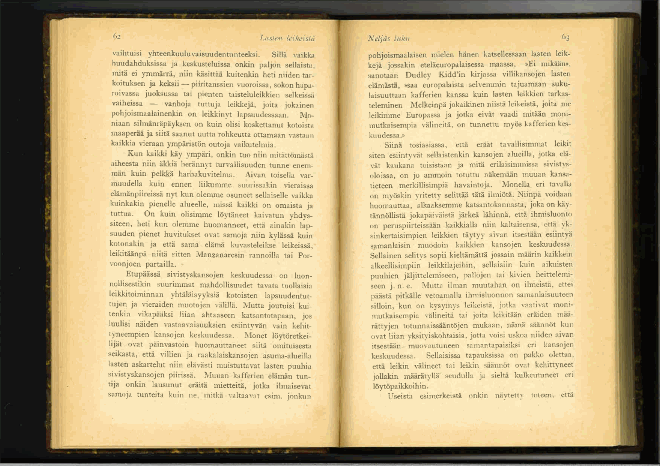
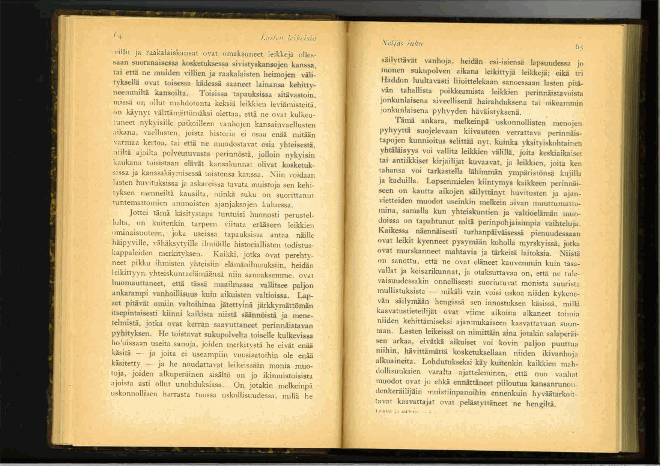

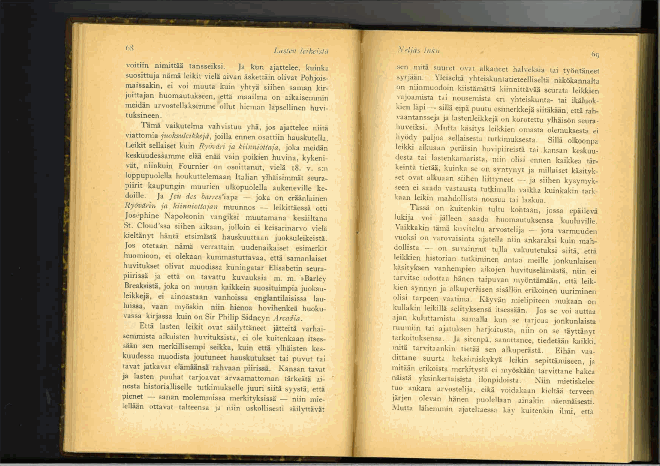
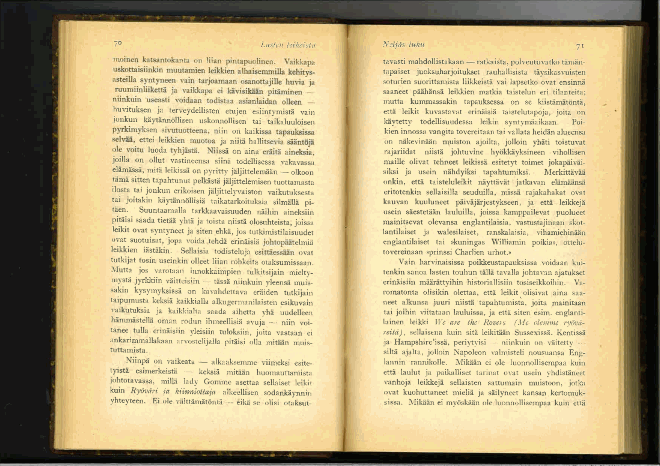



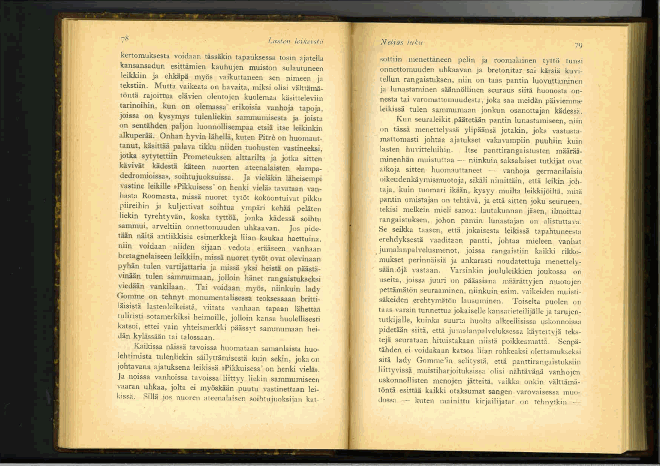
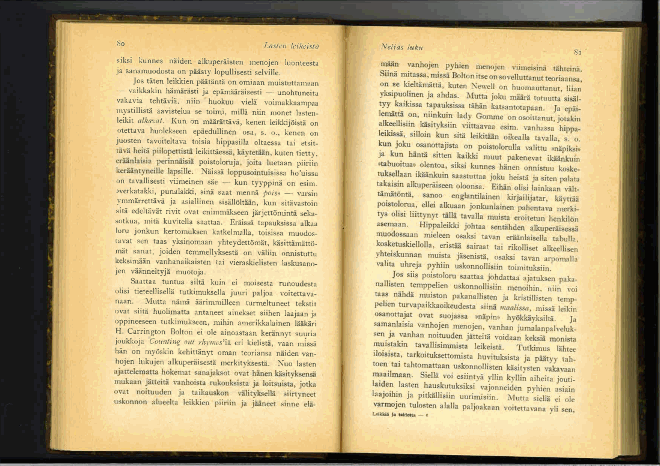
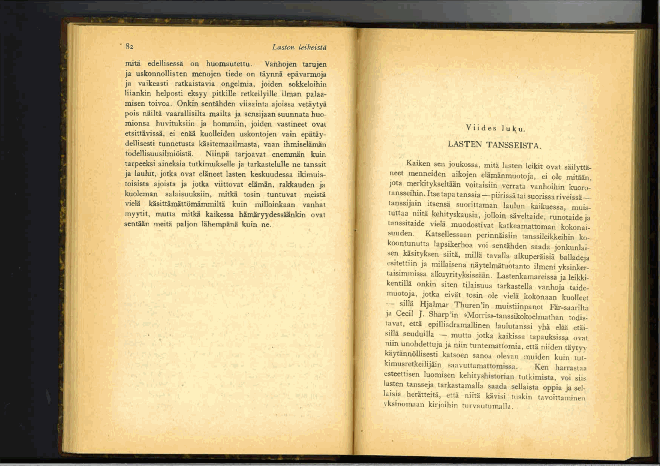
Disclosure statement
No potential conflict of interest was reported by the author(s).
Correction Statement
This article has been republished with minor changes. These changes do not impact the academic content of the article.
Additional information
Notes on contributors
Lauri Selonen
Lauri Selonen is a master's degree student in the East-Asian Studies program at the University of Turku.
Notes
1 Original excerpt from Dudley Kidd's The Savage Childhood: Study of Kafir Children Adam and Charles Black, London (1906) pp. 63.
2 Either Alfred Cort Haddon (1855–1940) or his daughter Kathleen Haddon (1888–1961), both of whom were influential anthropologists of early twentieth century.
3 Louis Becq de Fouquières: Les Jeux Des Anciens: Leur Description, Leur Origine, Leurs Rapports Avec La Religion (1869).
4 ‘Forfeits are stunts or actions that a person who has made a mistake or lost has to carry out as a punishment. These games come in many shapes and forms.’ Patrick Beaver: Victorian Parlour Games (1974).
5 William Wells Newell (1839–1907) was an American folklorist whose work includes for example the collection of games and songs of American children.
6 In the original text Juoksuleikki (Lit. Running game), a word which Hirn seems to use to mean games resembling tag in that there is running and catching involved. Because of this I've chosen to translate it as tag game.
7 Alice Berth Gomme (1853–1938) was a British folklorist who pioneered studies in children’s games.
8 Or Blind Mans Bluff is a variant of tag where the ‘it’ is blindfolded. The word here is Sokkoleikki (lit. Blind-game) which could also refer to any number of games where one of the players is blindfolded.
9 Colin maillard is the French name for Blind man’s Buff.
10 It is not clear which illustration is being referred to here, however a number of these fitting the description here seem to exist.
11 ‘Harie’, ‘Harry’ and ‘Hairy’ seem to be interchangeable here. Similar pronunciations have probably resulted in lots of word-play.
12 Brownie is apparently a household spirit of small stature similar to Scandinavian Tomte or Nisse.
13 Liten lever än means ‘the little one lives yet’. The Finnish name for the game has a similar meaning.
14 Giuseppe Pitrè (1841–1916) was an Italian folklorist.
15 Edward Tylor: Primitive Culture John Murray, London (1871).
16 Most probably: Alice Bertha Gomme: The Traditional Games of England, Scotland and Ireland (Vol. 1, 1894 and Vol. 2 1898).
17 The Finnish rhyme here is: Verkatakki, punalakki, sinä saat mennä pois or translated without the rhymes Broadcloth coat, Red woollen cap, You – should – get – out. This poem does not have the exact same rhythm as the one above but is still rather similar. Both of these poems are excerpts from much longer original ones.
18 Henry Carrington Bolton: The Counting-Out Rhymes of Children: Their Antiquity, Origin and Wide (1888).
